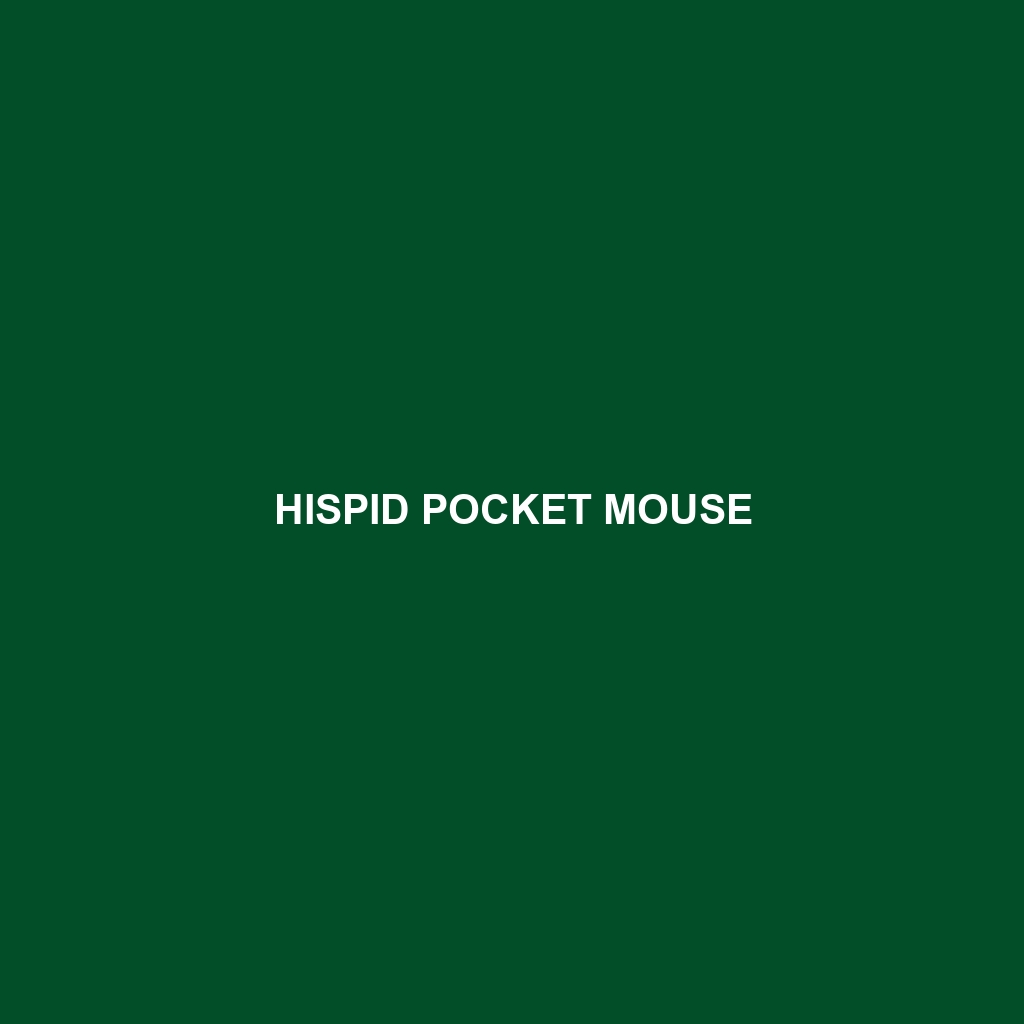Hispid Pocket Mouse
Common Name: Hispid Pocket Mouse
Scientific Name: Chaetodipus hispidus
Habitat
The Hispid Pocket Mouse is primarily found in the arid and semi-arid regions of the southwestern United States, particularly in states such as Arizona, New Mexico, and parts of Texas. It thrives in habitats such as desert grasslands, scrublands, and sandy soils, where it can create burrows and find shelter from predators.
Physical Characteristics
This small rodent typically measures between 9 to 11 inches in length, including its long tail, which can be about 5 inches. The Hispid Pocket Mouse has a distinctive coat that features a mix of brown and gray fur, offering them excellent camouflage against their natural habitat. Its most notable physical traits include large external cheek pouches, which they use for storing food, and a pointed snout that aids in foraging.
Behavior
The Hispid Pocket Mouse is primarily nocturnal, exhibiting increased activity during the night when it forages for food. It is known for its agility and ability to quickly evade predators. This species is also solitary, preferring to live alone or in small family groups within their burrow systems. During the day, they seek refuge underground to avoid the harsh desert temperatures.
Diet
The diet of the Hispid Pocket Mouse consists mainly of seeds, grains, and various plant materials. They are known to feed on herbaceous plants and occasionally on insects, making them omnivores. Their foraging behavior includes collecting and storing food in their cheek pouches, which they later transport to their burrows for consumption.
Reproduction
The breeding season for the Hispid Pocket Mouse typically occurs from late spring through early summer. Females usually produce one to three litters per year, with each litter consisting of 2 to 6 offspring. After a gestation period of about 21 days, the young are born blind and helpless, relying on their mother for nourishment and protection until they are mature enough to venture out of the burrow.
Conservation Status
Currently, the Hispid Pocket Mouse is classified as ‘Least Concern’ according to the IUCN Red List. However, habitat destruction and changes in land use pose potential threats to their populations. Conservation efforts are crucial to ensure their habitats remain intact to support sustainable populations.
Interesting Facts
One fascinating fact about the Hispid Pocket Mouse is its impressive ability to survive in extreme conditions, enabling it to thrive in habitats with limited water resources. Their cheek pouches can hold large quantities of food, sometimes as much as their own body weight!
Role in Ecosystem
The Hispid Pocket Mouse plays a crucial role in its ecosystem as a seed disperser, contributing to plant propagation. Additionally, they serve as prey for a variety of predators, including snakes, hawks, and small carnivores, thus playing an integral part in the food web.
